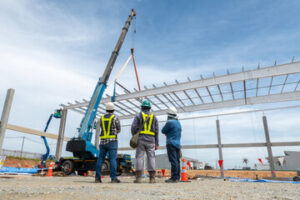One of the first steps in a dock repair is an underwater inspection. The inspection, which usually requires scuba gear, is used to find loose nails and structural problems. The inspector will also look at the wood planks and railings for signs of rot and damage. If any of these parts need to be replaced, a professional will waterproof them before installing them. Visit Website to learn more about dock repair.
 Another step in dock repair is leveling the ground. This is an important step because it evens out the dock’s surface. This can result in a flat surface or a sloping surface. Depending on your area and zip code, the cost of dock repairs can vary significantly. Therefore, it is always best to seek the help of a professional when in doubt.
Another step in dock repair is leveling the ground. This is an important step because it evens out the dock’s surface. This can result in a flat surface or a sloping surface. Depending on your area and zip code, the cost of dock repairs can vary significantly. Therefore, it is always best to seek the help of a professional when in doubt.
Fortunately, most people can take care of dock repairs themselves – but it is always best to hire a professional when you’re unsure. It’s also a good idea to replace the hardware on a dock when it starts to deteriorate. This can be done by yourself or by hiring a professional. Older wood pilings may be damaged by marine organisms, which are attracted to wood. Additionally, a piling bumper can be used to protect the pilings from further damage.
Before hiring a professional to repair your dock, make sure to ask them about their fees. Some specialists charge an hourly rate, while others charge a flat rate for a specific task. Ask if there’s a minimum fee or if there are call-out fees. Additionally, a professional dock inspector will be able to pinpoint any problems that may need to be repaired before they become a major problem. The best way to avoid these costly problems is to have your dock inspected at least once a year.
One of the most important repairs for a dock is to repair the structural integrity. If you notice any damage to the structure of your dock, it’s best to have it repaired immediately because the damage could become worse if left untreated. If your dock has damaged supports or connectors, you should replace them if necessary. Broken bracing or supports will also need to be replaced.
Foundation deterioration is another problem to be aware of. Not only is foundation damage dangerous, but it also poses a significant risk to the dock’s stability. In fact, cracks in the foundation are a strong indication that your dock needs a complete overhaul. It’s important to have regular inspections to ensure your waterfront investment lasts as long as possible.
Costs for repairing a dock can vary greatly depending on where it is located. Repairing a dock on a pond will be the cheapest option, while a dock on a river will cost the most. The cost will depend on the size and material of the dock. Larger docks require more time and materials.
Cleaning the dock will help protect it from the elements. It is important to remove dirt, organic growth, and other materials that can reduce its structural integrity. A poorly maintained dock can also negatively impact the aquatic ecosystem. You can use non-corrosive cleaning products such as baking soda, water-based dishwashing detergent, or a gentle eco-friendly soap to clean your dock. You can also soft-wash the dock by using low-pressure water.
When constructing a dock, consider its location and size. Some areas have deep water and fluctuating water levels. As a result, a floating dock is best suited for areas where the dock will be in the water all year. Floating docks are typically designed in the shape of a U or T to help them float easily on the water. Cables or ramps typically support them. You can also easily move the floating docks from one location to another. They also need a fairly level lake bottom and a little elevation along the bank.
When hiring a dock builder, research the regulations and guidelines for the location where the dock will be built. These documents can be found in libraries and online. Dock builders who specialize in building boat docks thoroughly understand all regulations and what is and is not permitted. Obtaining the proper permit is critical, not only for your safety but also for the value of your property. With the proper permit, you may avoid paying fees and having to remove your dock.
